|
GOLDEN SPIKE National Historic Site |
 |
These were the men who built the road;
Great men, small men,
Names known, names unknown.
Faces in history,
These were the men;
Men from the East, men from the West,
Audacious men, audacious times.
The Builders
The men who built the Pacific Railroad rank among the most dynamic, brilliant, and resourceful of the 19th century. The key figures in each company were well versed in management and in construction, fields requiring different talents, involving different work, and attracting different temperaments. Working sometimes together, sometimes in opposition, they pushed the Pacific Railroad to completion against almost insurmountable obstacles, both financial and engineering.
Composing the management of the two companies were men skilled in corporate finance and administration. Their methods were those of the 1860's, employed by most of their contemporaries in business—practices condemned as thoroughly unethical by today's standards. Thus the truly great achievement of these men has been tarnished by the judgment of a later generation. They were, in fact, the first victims of the revulsion against such methods that swept the country during the early 1870's.
The Big Four ran the Central Pacific. Leland Stanford served as president and handled all matters requiring State and local political influence and manipulation. Collis P. Huntington, vice president, made his headquarters in New York. He negotiated for purchases of equipment and materials, solicited investment from Eastern and European capitalists, and represented the company in Washington. Treasurer Mark Hopkins—quiet, meticulous, and clear-minded—balanced the flamboyant Stanford and Huntington. He exerted great influence over his associates and usually saw the solution to difficult problems. Forceful and energetic, Charles Crocker was a silent partner in the management, earning his principal fame as the fieldman who supervised construction of the road.
Dominant in the Union Pacific management were Thomas C. Durant and Oakes Ames. Durant was vice president of the railroad, and, until 1867, president of the Crédit Mobilier of America, the construction company that built the road. A man of tireless energy and hair trigger temper, he made enemies of almost everyone with whom he worked. Yet on the management level, he, more than anyone, was responsible for completion of the Union Pacific. Ames, Boston shovel manufacturer and Congressman from Massachusetts, came to the aid of the company in its blackest financial crisis. His vast resources kept construction going, although in the end personal bankruptcy resulted.
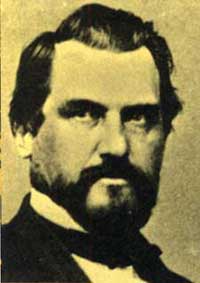 Gov. Leland Stanford Stanford University |
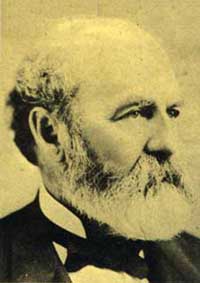 Collis P. Huntington Southern Pacific |
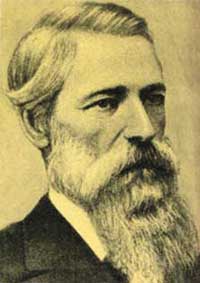 Mark Hopkins Southern Pacific |
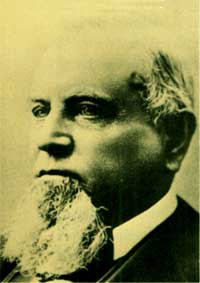 Charles S. Crocker Southern Pacific |
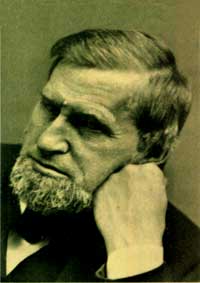 Oakes Ames Library of Congress |
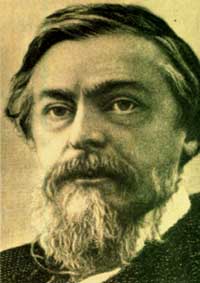 T.C. Durant Union Pacific |
A bitter quarrel between Durant and Ames burdened the Union Pacific management. Durant, a speculator, wanted to make a fortune from construction and then abandon the road. Ames, the investor, was interested in building a good road as a long-term investment. Aggravated by other differences and by a personality clash, the Durant-Ames feud influenced the management of the U.P. throughout most of the construction period.
Other men of importance were Sidney Dillon, who succeeded Durant as president of the Crédit Mobilier and later became president of the Union Pacific; John Duff, director; and Oliver Ames, brother of Oakes Ames and General Dix's successor as president.
Both railroads had capable men in the field. With the exception of Crocker, they kept largely aloof from financial and organizational problems, devoting themselves entirely to building the railroad. As a consequence, they escaped the public condemnation that later fell upon the managers of the companies.
For the Central Pacific, Crocker, as president of the construction company, was the driving power. Crocker summed up his role: "Why, I used to go up and down that road in my car like a mad bull, stopping along wherever there was anything amiss, and raising Old Nick with the boys that were not up to time." Crocker's right-hand man was his construction superintendent, James H. Strobridge. Chief Engineer Samuel S. Montague (Judah, so instrumental in forming the Central Pacific, had died in 1863) carried the surveys across Nevada and Utah to Green River, Wyo., and directed all engineering work from Sacramento to Promontory. His chief assistant was Lewis M. Clement.
The Union Pacific also had an able corps of fieldmen. Chief Engineer Grenville M. Dodge supervised U.P. surveys to the California border. Samuel B. Reed served as superintendent of construction. The partnership of John S. and Dan T. Casement held the contract for track-laying and much of the grading. These were the men who carried the rails from Omaha to Promontory—1,085 miles, in 4 years.

|
|
Last Modified: Sat, Sep 28 2002 10:00:00 pm PDT |


